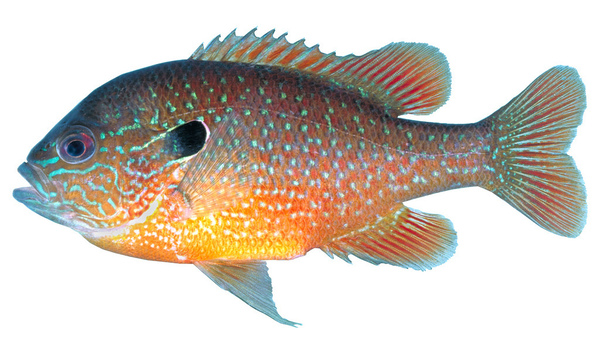Lake sunfish are among the most popular freshwater fish in North America, admired for their vibrant colors, diverse species, and enjoyable fishing experiences. This guide explores the world of lake sunfish, diving into their habitats, behavior, and importance, as well as offering practical tips for fishing enthusiasts. Whether you’re an angler or a nature enthusiast, this article will provide everything you need to know about these fascinating fish.

Lake sunfish are freshwater fish belonging to the family Centrarchidae, which includes popular species like bluegill, pumpkinseed, and redear sunfish. They are often found in lakes, ponds, and slow-moving rivers across North America. Known for their vibrant colors and unique body shapes, sunfish are a favorite among anglers and nature lovers alike.
Size: Most lake sunfish range from 4 to 12 inches in length.
Color: Their colors vary by species, from the bright orange of pumpkinseed sunfish to the iridescent blue-green hues of bluegills.
Shape: Sunfish have a flattened, disc-like body shape, making them easily recognizable.
There are several species of sunfish commonly encountered in lakes, each with distinct features and behaviors:
Appearance: Dark blue gill flaps and greenish bodies with orange-yellow bellies.
Behavior: Social fish often found in schools.
Habitat: Prefers shallow areas near vegetation.
Appearance: Bright orange spots and a distinctive red mark on the gill cover.
Feeding Habits: Feeds on insects, crustaceans, and small mollusks.
Unique Trait: Named for their red-edged gill flaps.
Diet: Known for eating snails and other shelled prey.
Habitat: Thrives in lakes, ponds, and even muddy waters.
Appearance: Olive-green bodies with blue or orange markings.
Features: Elongated ear flaps and vibrant red or orange coloring.
Location: Found in clear, rocky lakes and streams.

Sunfish are highly adaptable fish that thrive in various lake environments. However, they prefer specific conditions for optimal survival:
Vegetation: Sunfish often reside near aquatic plants, using them for cover and food.
Shallow Waters: They favor depths of 3–6 feet, particularly in warmer months.
Calm Areas: Look for them in sheltered lake areas, such as coves or near fallen trees.
Spring: Sunfish move to shallow waters to spawn.
Summer: They remain in shaded, vegetated areas to avoid direct sunlight.
Winter: Sunfish retreat to deeper waters where temperatures are more stable.
Understanding the behavior of lake sunfish can help anglers and ecologists alike appreciate these fish more deeply.
Diet: Sunfish are omnivorous, feeding on insects, small crustaceans, worms, and algae.
Feeding Times: They are most active during early morning and late afternoon.
Breeding Season: Late spring to early summer.
Nest Building: Male sunfish create circular nests in sandy or gravelly lakebeds.
Defensive Nature: Males aggressively guard their nests against intruders.

Fishing for sunfish is an enjoyable activity for anglers of all skill levels. Here’s how to maximize your success:
Live Bait: Worms, crickets, and minnows are excellent choices.
Artificial Lures: Small jigs, spinners, and flies mimic their natural prey.
Casting Near Vegetation: Target areas with plenty of aquatic plants.
Bobber Fishing: Use a lightweight bobber to keep bait at the right depth.
Ice Fishing: Drill holes near drop-offs where sunfish gather in winter.
Rod and Reel: Light spinning gear is ideal for sunfish fishing.
Line Strength: Use a 4–6 lb test line to avoid scaring these cautious fish.
Sunfish play an essential role in maintaining lake ecosystems.
Predators: Sunfish control insect and plankton populations, preventing overgrowth.
Prey: They serve as a food source for larger fish, birds, and mammals.
Overfishing and habitat destruction can threaten sunfish populations.
Invasive species, like zebra mussels, may disrupt their food sources.

For those who enjoy fishing for sustenance, lake sunfish are a delicious choice:
Sunfish have mild, flaky meat that is highly sought after by anglers.
Cleaning: Remove scales, guts, and fins before cooking.
Popular Recipes: Pan-fried sunfish fillets, baked sunfish with lemon, or grilled sunfish with herbs.
Sunfish are often compared to other freshwater fish. Here’s how they stack up:
Sunfish vs. Bass: While bass are larger and more aggressive, sunfish are easier to catch.
Sunfish vs. Crappie: Crappie are prized for their size, but sunfish are more abundant and accessible.
Panfish vs. Sunfish: All sunfish are panfish, but not all panfish are sunfish!
Lake sunfish are more than just beautiful fish; they are an integral part of freshwater ecosystems and a joy for anglers. Whether you’re fishing for fun, studying their ecology, or preparing a fresh-caught meal, sunfish offer endless opportunities for exploration and enjoyment.
Next time you’re near a lake, take a moment to appreciate the vibrant world of sunfish—and maybe try catching one yourself!
animal tags: Sunfish
We created this article in conjunction with AI technology, then made sure it was fact-checked and edited by a Animals Top editor.